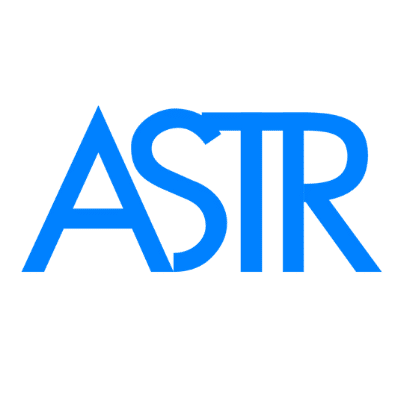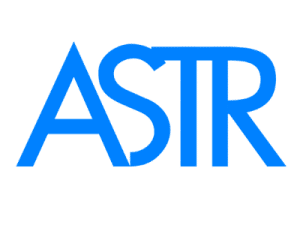AIP vs. Whole30 vs. ASTR: What’s the Best Diet for Autoimmune Flares?
AIP vs. Whole30 vs. ASTR: What’s the Best Diet for Autoimmune Flares?
If you suffer from an autoimmune condition like Hashimoto’s, lupus, rheumatoid arthritis, or psoriasis, you’ve likely heard of elimination diets like AIP (Autoimmune Protocol) e Whole30. While these diets are popular for reducing inflammation, many people find themselves still battling flares, fatigue, or food sensitivities months later.
So what’s the safest, most effective way to reduce flares and support true healing? Let’s break down the differences between AIP, Whole30, and the ASTR Diet, developed by Dr. Joseph Jacobs.
What Causes Autoimmune Flares?
Autoimmune flares are often triggered by:
-
Inflammatory foods (gluten, dairy, sugar)
-
Gut permeability (“leaky gut”)
-
Environmental toxins
-
Chronic stress and hormone imbalance
-
Dysbiosis (gut bacteria imbalance)
The right diet should calm the immune system, repair the gut, reduce toxins, and nourish key systems—not just eliminate random foods.
📚 Fasano, 2012; Belkaid & Hand, 2014
1. The AIP Diet: Powerful but Restrictive
The Autoimmune Protocol (AIP) is a strict elimination diet that removes grains, dairy, legumes, nightshades, eggs, nuts, seeds, and more. It’s designed to identify food triggers and reduce inflammation—but:
-
Many people stay stuck in the elimination phase
-
Reintroductions are hard and often fail
-
The diet can lead to nutrient deficiencies and burnout
While AIP may work short-term, it can backfire if followed too long without support.
📚 Rogers et al., 2018; Sonnenburg & Sonnenburg, 2015
2. Whole30: Clean Reset, Not a Healing Protocol
Whole30 is a 30-day “clean eating” plan that removes sugar, grains, dairy, legumes, alcohol, and processed food. While it encourages label reading and food awareness, it is:
-
Focused on behavior reset, not root-cause healing
-
Not designed for autoimmune conditions
-
Doesn’t address gut health, toxin exposure, or hormones
It may help people uncover food sensitivities but won’t resolve deeper inflammation or prevent future flares.
📚 Hartwig & Hartwig, 2015
3. The ASTR Diet: Designed to Reverse Autoimmune Flares Safely
Developed by Dr. Joseph Jacobs after battling years of chronic pain and fatigue, the ASTR Diet goes beyond food elimination. It’s a holistic, root-cause approach to autoimmune healing focused on:
✅ Removing immune triggers (gluten, dairy, sugar, toxins)
✅ Restoring the gut and liver through nutrient-rich healing foods
✅ Balancing hormones and blood sugar
✅ Detoxing the body safely using real food and clean living
✅ Replenishing nutrients to support the immune system
Unlike other diets, the ASTR Diet is sustainable, nourishing, and scientifically grounded.
📘 Learn more in Eat to Heal
AIP vs. Whole30 vs. ASTR Diet: What’s the Difference?
| Feature | AIP | Whole30 | ASTR Diet |
|---|---|---|---|
| Removes inflammatory foods | ✅ | ✅ | ✅ |
| Supports gut healing | ⚠️ | ❌ | ✅ |
| Balances hormones | ❌ | ❌ | ✅ |
| Supporta la disintossicazione | ❌ | ❌ | ✅ |
| Nutrient sufficiency | ❌ | ⚠️ | ✅ |
| Long-term sustainable | ❌ | ❌ | ✅ |
| Designed for autoimmune healing | ✅ | ❌ | ✅ |
Why ASTR Is the Best Diet for Autoimmune Flares
If you’re stuck on AIP or frustrated that Whole30 didn’t bring lasting relief, the problem isn’t you—it’s the diet. ASTR focuses on what your body truly needs to heal from the inside out:
-
Anti-inflammatory nutrition without depletion
-
Safe reintroduction strategy
-
Addressing root causes, not just food triggers
-
Natural detox support and hormone balance
This is what makes the ASTR Diet safer and more effective—not only for calming autoimmune flares, but for reversing the underlying dysfunction.
Start Healing Your Autoimmune Flares—Naturally
You don’t have to stay stuck in a cycle of restriction and relapse. The ASTR Diet gives you the tools to nourish your body, calm your immune system, and restore long-term balance.
📘 Read Eat to Heal by Dr. Joseph Jacobs
👉 Book your free ASTR Diet consultation:
🔗 Schedule now
Riferimenti
-
Fasano, A. (2012). Zonulin and its regulation of intestinal barrier function. Physiological Reviews, 91(1), 151–175. https://doi.org/10.1152/physrev.00003.2008
-
Belkaid, Y., & Hand, T. W. (2014). Role of the microbiota in immunity and inflammation. Cell, 157(1), 121–141. https://doi.org/10.1016/j.cell.2014.03.011
-
Rogers, M. A., et al. (2018). Nutrient deficiencies in elimination diets. Clinical Nutrition, 37(5), 1661–1669. https://doi.org/10.1016/j.clnu.2017.06.012
-
Sonnenburg, E. D., & Sonnenburg, J. L. (2015). Starving the microbiome. Nature Reviews Microbiology, 13(6), 321–326. https://doi.org/10.1038/nrmicro3439
-
Hartwig, M., & Hartwig, D. (2015). The Whole30: The 30-Day Guide to Total Health and Food Freedom. Houghton Mifflin Harcourt.

